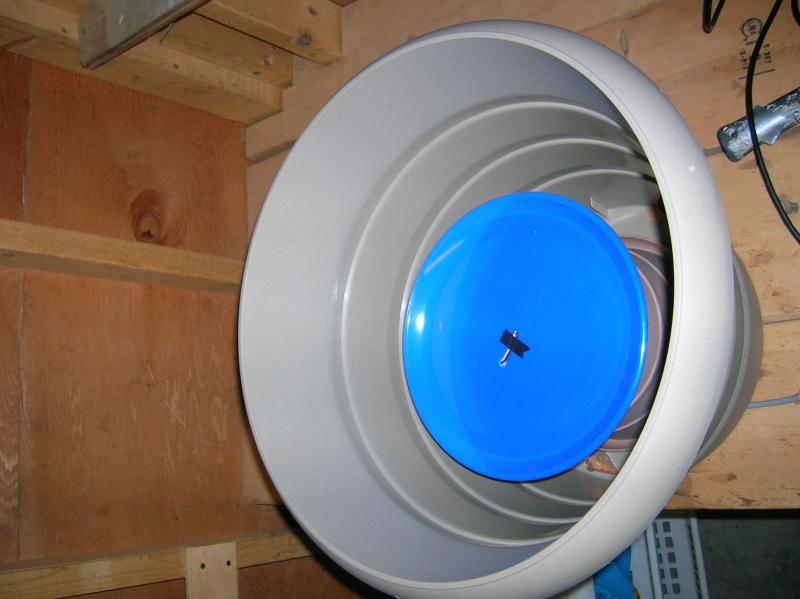During the Cold War, the U.S. Navy set up an underwater network of microphones to listen to the sounds in the sea around the coasts of the U.S. with the goal of being able to detect any Soviet submarines operating nearby. The Navy accumulated a massive number of recordings in the process, and also discovered there were many sounds on the recordings that they were not able to conclusively identify. The Navy wanted to know if the sounds were from natural sources, like marine mammals, or from human-made sources like Soviet submarines.
They turned to experts in the identification and study of natural sounds—bioacoustics experts—to help. One set of those experts were in the Bioacoustics Research Program of the Cornell Laboratory of Ornithology. Experts there began helping to develop software tools to help sort through and identify the sounds recorded in the sea by the Navy. In the process, they confirmed that many were indeed various kinds of whales. They also discovered that because the Navy had so many listening stations that were run more or less continuously, they could start to do things like triangulate the locations of individual whales and get an estimate of the numbers that were in the listening area at any one time.
These discoveries opened up researchers’ eyes to an exciting new world of possibilities. Could it be possible to emulate a smaller scale version of the Navy’s sound recording network in a particular place and time to identify and monitor wildlife that made recognizable sounds? Scientists and engineers in the Bioacoustics Research Program at the Cornell Lab of Ornithology worked together to first devise a way to put a microphone and small recording unit into a waterproof case that could be anchored to the ocean floor. The recording unit would be programmed to turn on and off at particular times. Then eventually the unit could be released from its anchor through a special radio-controlled latch that could be triggered to open from a ship at the surface. The unit would bob to the surface to be retrieved, taken back to the lab, and the sound recordings analyzed. This was one of the first developments of an automated bioacoustics recording unit that we became aware of, since it happened when we were at Cornell.
We wrote recently about Bill Evans’ work to identify the calls of nocturnally migrating birds and study them. Bill developed a type of simple automated recording unit that anyone could make inexpensively and deploy on a home computer. He was able to work with a software engineer to develop some computer programs to automatically detect the calls of migrating birds and began offering the software and plans for building one of these automated sound recording stations about 20 years ago, for free, through his website. We began using some of Bill’s famous flowerpot design microphones about 15 years ago to record night migrating birds here in Maine and have now used them in many places far and wide.
Today, a number of sophisticated types of automated recording units are available from places like the Cornell Lab of Ornithology’s Bioacoustics Research Program and from private companies like Wildlife Acoustics. Advanced software is available to quickly analyze and sort through the years of recordings that quickly accumulate with these kinds of recording units. Today it is possible for automated recording units to identify and report the location of rare animals like Right Whales to ship captains almost immediately to help them avoid the possibility of injuring one. Recording units in Africa have been set up to monitor the numbers of elephants and to quickly detect and notify authorities of gunshots that may signify the presence of poachers.
Recording units can be used to quickly assess the bird species within a particular area or to detect the presence of hard-to-find species that may vocalize irregularly. Behavioral ecologists are using the units to study singing behavior and how it may be impacted by human-caused noises from machinery or highways.
The possibilities for learning about the natural world from using automated sound recording units are almost endless. But the simplest pleasure we find comes from listening to a recording from one of these units, of a special place. Doing so makes us feel, for those brief moments, that we are standing perhaps in a forest or along the shore, quietly experiencing that world around us.
Jeffrey V. Wells, Ph.D., is a Fellow of the Cornell Lab of Ornithology. Dr. Wells is one of the nation's leading bird experts and conservation biologists and author of the “Birder’s Conservation Handbook.” His grandfather, the late John Chase, was a columnist for the Boothbay Register for many years. Allison Childs Wells, formerly of the Cornell Lab of Ornithology, is a senior director at the Natural Resources Council of Maine, a nonprofit membership organization working statewide to protect the nature of Maine. Both are widely published natural history writers and are the authors of the popular book, “Maine’s Favorite Birds” (Tilbury House) and the newly released “Birds of Aruba, Bonaire, and Curaçao” from Cornell University Press.






























